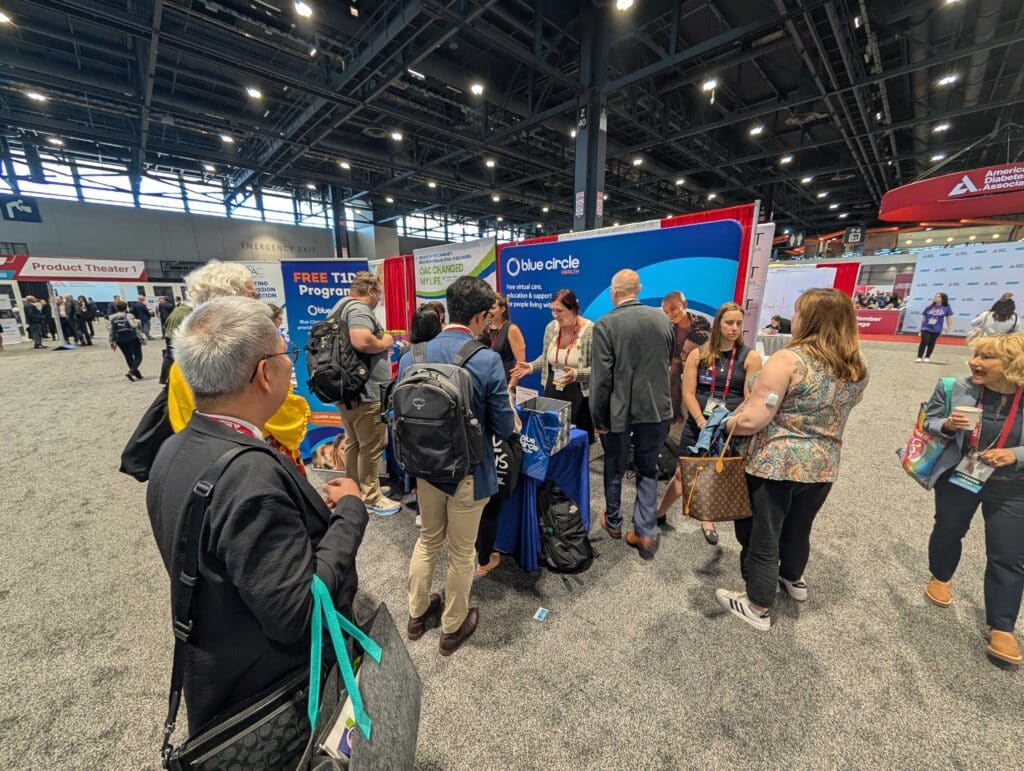Hi All,
We are excited to announce that we can now serve people with type 1 diabetes (T1D) in 5 additional states: Pennsylvania, Virginia, Connecticut, Kentucky, and my home state of Massachusetts. With this recent expansion, we’re now supporting individuals across 16 states. Since launching in January 2024, we’ve had the privilege of helping more than 900 people.
The number of people we serve keeps climbing thanks to referrals from hundreds of clinical partners, growing support on social media, the people that visit our booth at events, fellow T1D nonprofits, and word of mouth from those who’ve experienced the program firsthand.
In short, it’s you, the community, who make it possible for us to care for hundreds so quickly. But reaching our shared goal of better T1D care for everyone is going to take more than momentum. It’ll take a movement.
Building the Movement for Better Type 1 Diabetes Care
As we share our program with new audiences, it’s clear that many who aren’t directly affected by the condition don’t fully understand the challenges people living with T1D face. The unfortunate reality is, people with T1D fight two wars: one is against a relentless 24/7 condition, and the other against a healthcare system that makes it difficult and expensive to stay alive.
Only 30% of US counties have an endocrinologist.1 Diabetes self management education, especially important considering the nature of this condition, is used by only 6.8% of privately insured and 5% of government insured.2 Most people are burdened with thousands of dollars of medical debt.3 Only 1 in 4 people with T1D achieve healthy blood glucose management.4 The challenges are greater for those with fewer resources, resulting in more complications and hospitalizations, and shorter lives.5 Recent changes at the federal level will soon make things even more challenging with millions set to lose or have reduced access to health insurance.6
This is not a flaw in the design of our healthcare system.
It is the design of our system.
As an organization, Blue Circle Health can improve the lives of many. As a community, we can create a movement for better care for all people living with T1D.
This year, we began working with the community to raise awareness and advocate for better care. We:
- Built a Community Engagement team, staffed by people that all live with type 1.
- Invited known voices to help raise awareness via a social media message that reached more than 800,000 people across platforms in a week.
- Began sharing the stories of the people we serve (3 min video)
- Launched a podcast, “Around the Circle: Living Well with T1D,” hosted by Scott Johnson.
- Are now listed on Beyond Type 1’s GetInsulin.org and the Association of Diabetes Care & Education Specialists’ affordability search tool.
As we draw attention to the challenges, we’ll continue to show that rethinking how we approach care can lead to better outcomes, in as rigorous a way as possible. Toward that end:
- Our first clinical outcomes, reductions in diabetes-related distress, were presented at ADA and ADCES. Participants achieved reductions in all 10 categories of distress, with 9 of 10 categories showing statistically significant and clinically meaningful reductions.
- Our most recent Net Promoter Score, assessing how likely participants are to recommend Blue Circle Health to friends, was 100/100, up from previous scores of 91 and 93. For reference, well known brands such as Apple and Chick-fil-A score in the low 60’s.
- We received certification from the American Diabetes Association as a Recognized Education Program, meeting the National Standards for Diabetes Self-Management Education and Support.
As we enter into fall of 2025, expect to see more clinical outcomes and new partnerships with stakeholders across the T1D and healthcare communities. Thank you, as always, for all that you have done and will do to help raise awareness and improve the care of people with type 1 diabetes. As always, I encourage anyone with thoughts or ideas to connect.
Sincerely,
Len
Leonard D’Avolio, PhD
CEO, Blue Circle Health
Asst. Professor, Harvard Medical School
Asst. Professor, Mass General Brigham
____________________________________________________________________________
- Marsh, T. (2024, December 17). Endocrinologist Deserts: A critical healthcare gap for millions – GoodRx. GoodRx. https://www.goodrx.com/healthcare-access/research/endocrinology-deserts-healthcare-gap
- Davis, J., Hess Fischl, A., Beck, J., Browning, L., Carter, A., Condon, J. E., Dennison, M., Francis, T., Hughes, P. J., Jaime, S., Lau, K. H. K., McArthur, T., McAvoy, K., Magee, M., Newby, O., Ponder, S. W., Quraishi, U., Rawlings, K., Socke, J., Stancil, M., Uelmen, S., & Villalobos, S. (2022). 2022 National Standards for Diabetes Self-Management Education and Support. Diabetes Care, 45(2), 484–494. https://doi.org/10.2337/dc21-2396
- CharityRx News. (2022, June 1). The financial burden of U.S. insulin pricing on the American diabetic community. CharityRx. Retrieved June 10, 2025, from https://www.charityrx.com/blog/the-financial-burden-of-u-s-insulin-pricing-on-the-american-diabetic-community/
- Hankosky, E. R., Schapiro, D., Gunn, K. B., Lubelczyk, E. B., Mitroi, J., & Nelson, D. R. (2023). Gaps Remain for Achieving HbA1c Targets for People with Type 1 or Type 2 Diabetes Using Insulin: Results from NHANES 2009-2020. Diabetes therapy : research, treatment and education of diabetes and related disorders, 14(6), 967–975. https://doi.org/10.1007/s13300-023-01399-0
- Hill-Briggs, F., Adler, N. E., Berkowitz, S. A., Chin, M. H., Gary-Webb, T. L., Navas-Acien, A., Thornton, P. L., & Haire-Joshu, D. (2021). Social determinants of health and diabetes: A scientific review. Diabetes Care, 44(1), 258–279. https://doi.org/10.2337/dci20-0053
- University of California, Berkeley. (2025, July 22). What do the looming cuts to Medicaid really mean?. UC Berkeley Public Health. https://publichealth.berkeley.edu/articles/news/commentary/what-do-cuts-to-medicaid-really-mean

